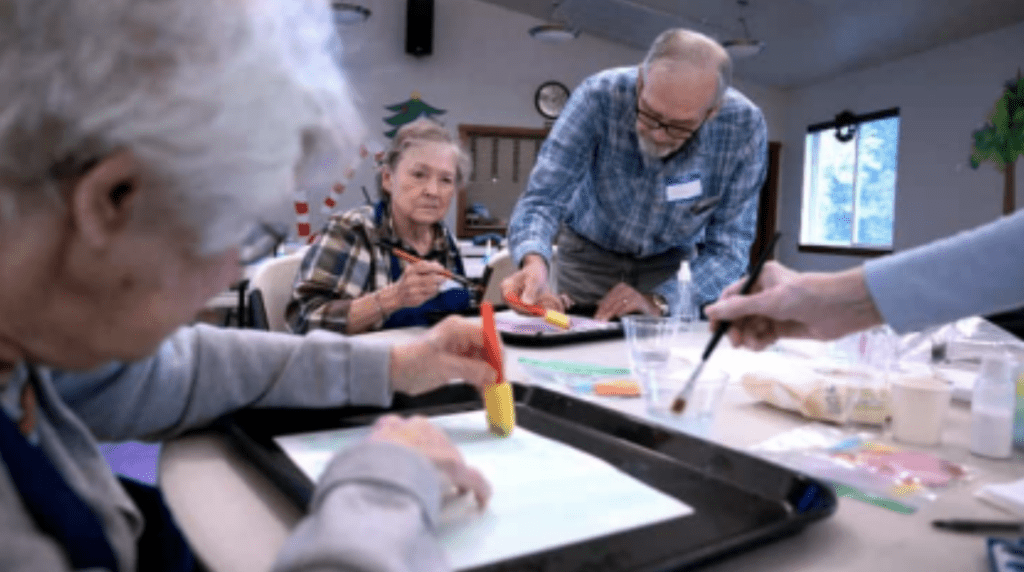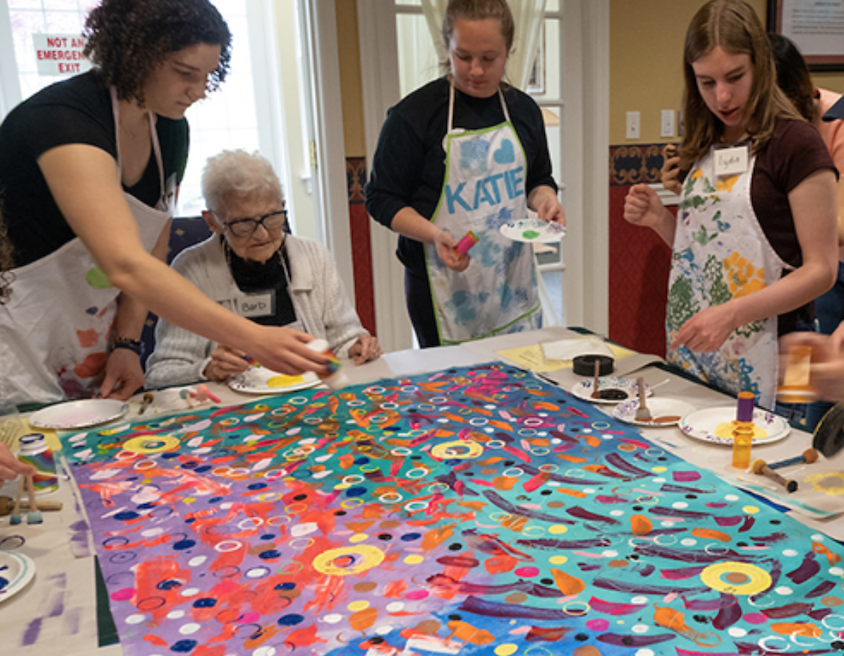Research
The peer-reviewed publications below show that participation in the OMA program benefits both the older adults living with dementia and the student volunteers. Read more to find out the details.
Journal Article
Using Art and Technology to Reduce Loneliness and Bridge the Age Divide: A Qualitative Study
2024
Lokon, E., Mehrotra, V., Murali, S., & Oakman, R.
Journal Article
Transformative Power of Participating in Opening Minds through Art (OMA), an Expressive Arts Program for Medical Students
2023
Dellasega, C., George, D. R., & Lokon, E.
Journal Article
“Opening Minds through Art”: Participation in a Nursing Home-Based Expressive Arts Program to Improve Medical Students’ Attitudes Towards Persons Living with Dementia
2021
George, D., Lokon, E., Li, Y., & Dellasega, C.
Journal Article
Building Bridges in the Community through OMA, an Intergenerational Abstract Art Program for People Living with Dementia
2021
Danker, S., Lokon, E. Pax, C.
Journal Article
Opening Minds through Art: A Preliminary Study Evaluating the Effects of a Creative-Expression Program on Persons Living with Dementia and Their Primary Care Partners
2021
Levenberg, K., George, D. R., and Lokon, E. (2021).
Journal Article
The impact of a Gerontology Course and a Service Learning Program on College Student’s Attitudes toward People with Dementia
2011
Yamashita, T., Kinney, J.M., Lokon, E.
Journal Article
Building Bridges across Age and Cognitive Barriers through Art: College Students’ Reflections on an Intergenerational Program with Elders who Have Dementia
2012
Lokon, E., Kinney, J. M., & Kunkel, S.
Journal Article
“It makes me feel like myself”: Person-centered versus traditional visual arts activities for people with dementia
2016
Sauer, P. E., Fopma-Loy, J., Kinney, J. M., & Lokon, E.
Journal Article
Allophilia: Increasing college students’ “liking” of older adults with dementia through arts-based service learning experience
2018
Lokon, E., Li, Y. & Kunkel, S.
Journal Article
Using art in an intergenerational program to improve students’ attitudes toward people with dementia
2017
Lokon, E., Li, Y., & Parajuli, J.
Journal Article
Activities in dementia care: A comparative assessment of activity types
2016
Lokon, E., Sauer, P.E., & Li, Y.


